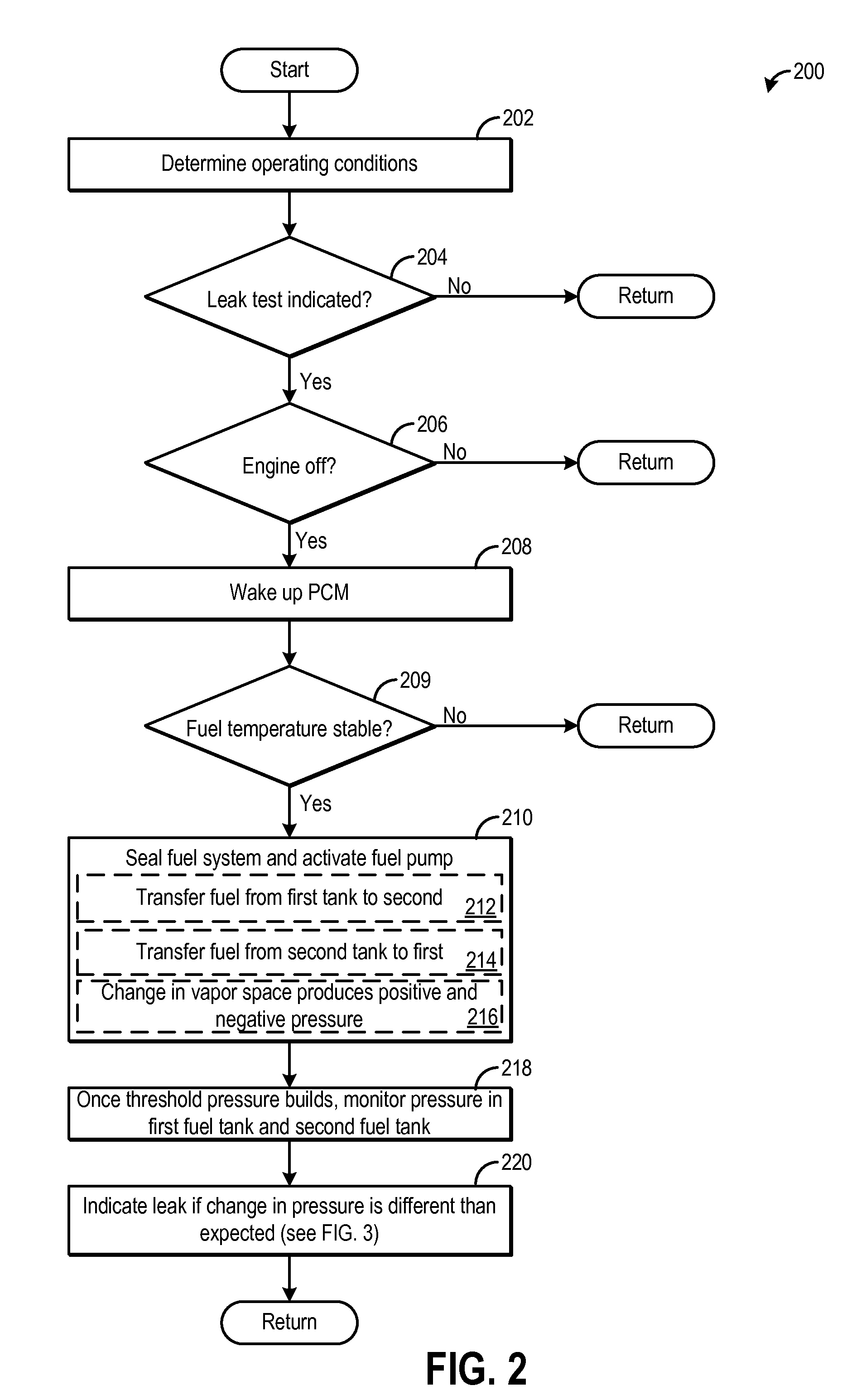Fuel system degradation test using two fuel tanks
a fuel system and fuel tank technology, applied in the field of fuel systems, can solve the problems of allowing fuel vapors to escape to the atmosphere, generating sufficient heat in the fuel system, and unable to achieve the effect of reducing engine packaging space and increasing engine efficiency
- Summary
- Abstract
- Description
- Claims
- Application Information
AI Technical Summary
Benefits of technology
Problems solved by technology
Method used
Image
Examples
Embodiment Construction
[0013]The use of naturally-built fuel system pressure provides for an inexpensive mechanism to test for fuel system degradation without the inclusion of additional components, such as vacuum pumps, to the vehicle. However, the building of pressure typically relies on the production of fuel vapors in the fuel tank resulting from heat rejection from the engine, and subsequent condensation of the fuel vapors as the engine cools. In vehicles configured to operate under battery power in some conditions, or in vehicles operated with low-volatility fuels, such as ethanol or ethanol blends, sufficient vapors may not be produced to perform the fuel system degradation test. To manipulate the vapor space of a fuel tank, resulting in a natural increase or decrease in fuel system pressure, fuel may be evacuated from the fuel tank to a secondary tank while the fuel system is sealed off from atmosphere. After a threshold pressure has been reached in the fuel system, the change in pressure may be m...
PUM
 Login to View More
Login to View More Abstract
Description
Claims
Application Information
 Login to View More
Login to View More - R&D
- Intellectual Property
- Life Sciences
- Materials
- Tech Scout
- Unparalleled Data Quality
- Higher Quality Content
- 60% Fewer Hallucinations
Browse by: Latest US Patents, China's latest patents, Technical Efficacy Thesaurus, Application Domain, Technology Topic, Popular Technical Reports.
© 2025 PatSnap. All rights reserved.Legal|Privacy policy|Modern Slavery Act Transparency Statement|Sitemap|About US| Contact US: help@patsnap.com



